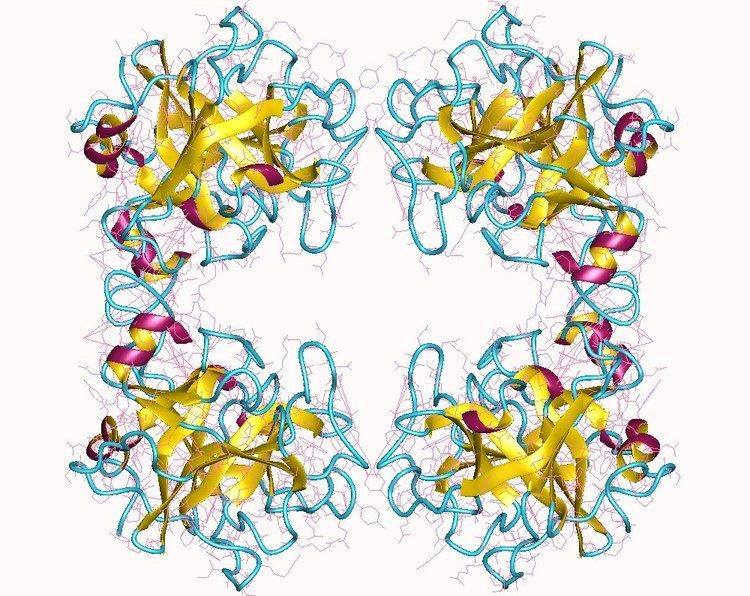EC number 3.4.21.59 ExPASy NiceZyme view | CAS number 97501-93-4 | |
 | ||
Tryptase (EC 3.4.21.59, ) is the most abundant secretory granule-derived serine proteinase contained in mast cells and has been used as a marker for mast cell activation. Club cells contain tryptase which is believed to be responsible for cleaving the hemagglutinin surface protein of influenza A virus, thereby activating it and causing the symptoms of flu.
Contents
Nomenclature
Tryptase is also known by mast cell tryptase, mast cell protease II, skin tryptase, lung tryptase, pituitary tryptase, mast cell neutral proteinase, mast cell serine proteinase II, mast cell proteinase II, mast cell serine proteinase tryptase, rat mast cell protease II, and tryptase M.
Clinical use
Serum levels are normally less than 11.5 ng/mL. Elevated levels of serum tryptase occur in both anaphylactic and anaphylactoid reactions, but a negative test does not exclude anaphylaxis. Tryptase is less likely to be elevated in food allergy reactions as opposed to other causes of anaphylaxis.
Physiology
Tryptase is involved with allergenic response and is suspected to act as a mitogen for fibroblast lines. Tryptase may use the morpheein model of allosteric regulation.
Genes
Human genes that encode proteins with tryptase activity include:
Mouse genes that encode proteins with tryptase activity include:
